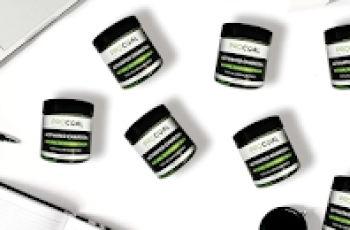
How Long Should You Wait Between Vitamin C and Niacinamide?
When it comes to active skincare ingredients, niacinamide and vitamin C are really popular, and for good reason. They both have impressive skin benefits, some of which are considered very similar. The question is whether they work best alone or should be used in combination. Don’t worry, I’m going to clear up some of the confusion on the subject and explain how best to use these two powerful remedies together, as well as how long you should wait between vitamin C and niacinamide.
What is niacinamide?
Niacinamide is a form of vitamin B3 that has a lot of benefits for the skin. It helps the skin by improving the skin’s natural protective barrier by producing ceramides. When the barrier is working properly, it protects itself from free radicals and other environmental influences. It also increases collagen production, reducing the appearance of fine lines and wrinkles, while regulating sebum production (the natural oil on the surface of the skin) and sebum volume.
You’ll also find that it has powerful antioxidant and anti-inflammatory properties, keeping the skin fully protected and looking its healthiest all day long.
What is vitamin C?
Vitamin C is another very popular skin ingredient with a variety of benefits. It has antioxidant properties and chemical exfoliating abilities that rejuvenate the complexion by balancing texture and skin tone. Hyperpigmentation and dark spots are visibly reduced, while exposure to free radicals causes no further damage.
If you’ve read any of our previous articles, you’ll notice that we’ve discussed how the idea of using niacinamide and vitamin C together is often seen as a pointless endeavor. This is the result of some outdated research from the 1960s, when formulas often used an unstable form of vitamin C that, when combined with niacinamide, caused a chemical reaction called niacin. This essentially caused a competition between the individual ingredients, causing them to lose their potency and no longer be effective for the skin. Modern formulas often contain two different types of stable vitamin C, which work together effectively if used correctly.
Can vitamin C be used after taking niacinamide?
Yes, you can, but in order to fully reap the benefits of vitamin C (also known as ascorbic acid), it’s generally considered appropriate to use vitamin C first, followed by niacinamide. This allows the ascorbic acid to penetrate the skin and exfoliate the outer surface. Applying niacinamide afterwards will ensure that any skin irritation that may occur after using vitamin C is soothed and relieved.
How long do I need to wait after applying Niacinamide?
When layering Vitamin C and Niacinamide, you should wait about 15 minutes between applications for best results. If that’s too long for you and time is a little tight, there are skincare products that have both ingredients in their formulas. If all else fails, you can alternate between using each ingredient, either on different days or in your morning or evening skincare routine. Regardless of how you use your skincare products, it’s important to consult with your doctor or dermatologist to ensure it’s safe for you when you introduce a new product or ingredient into your routine.
Can I use Niacinamide in the morning and Vitamin C at night?
Actually, yes, but if you ask my own opinion, the glow your skin gets after using Vitamin C will disappear by bedtime. With that in mind, I recommend using a Vitamin C product in your morning routine and then Niacinamide in the evening. With Niacinamide’s potent blend of antioxidants and its ability to regulate the skin’s sebum production, using it at night has the same effect as hitting the reset button on your complexion. Damage caused by free radicals and other environmental influences of the day is repaired and balance is restored. The best part is, all of this hard work can be done while you get some well-deserved beauty sleep.
Why can’t Vitamin C and Niacinamide be used together?
As I mentioned, there are still concerns that Vitamin C and Niacinamide can’t be used together. This is not easy as Vitamin C is one of the most difficult ingredients to use, so finding the best product for your skin type is an important task.
With modern formulas, you’ll find that these ingredients complement each other on a layered basis to give you even-toned and radiant skin.
Is Niacinamide better in the morning or at night?
Niacinamide can be used morning and night, and it works just as well no matter what time of day you use it. It’s also recommended to use it twice a day to ensure that your skin is optimally hydrated, as the hydrating properties lock moisture on the outer surface.
If you want to choose the time of day that works for you, here are the benefits: Using Niacinamide during your morning routine gives your skin the extra protection it needs to face the day and fight free radical damage, such as UV radiation, pollution, and bad weather. When used at night, any damage caused during the day is repaired and excess sebum on the skin’s surface is regulated.
Niacinamide is a resilient ingredient that can withstand a variety of factors that can easily reduce the effectiveness of other skincare ingredients. This is a benefit when combined with vitamin C such as heat exposure. While chemical reactions of niacin are undesirable, it is not completely impossible for it to occur on the skin. If you experience redness or flushing after using niacinamide and vitamin C, you should stop using these products. However, such reactions are still very unusual. If you have any concerns, it is best to consult a doctor or dermatologist to ensure that you and your skin are comfortable with the products you are using.
If you have more questions about how long you should wait between using vitamin C and niacinamide, follow us on Instagram.


